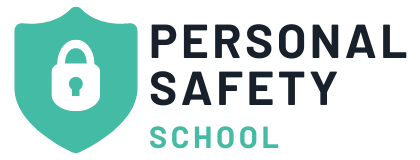There is hardly a person who hasn’t choked on food at least once in their lifetime. In most cases, everything ends well—but sometimes, choking ends fatally, especially if the person doesn’t receive help fast enough.
A quick and appropriate reaction can make the difference between life and death when someone is choking, so it is important to know what to do in such situations. This article will teach you more about the potential causes and symptoms and what to do when someone is choking.
It will also talk about some specific choking situations, and hopefully, by the end of it, you will be fully prepared to respond when someone is choking!
Understanding Choking: The Basics
Choking happens when our airways are obstructed, preventing breathing. The most common cause of choking is food – either when it is not chewed/sliced properly or when it is swallowed too quickly.
Additionally, various non-food items can cause choking in young children, who often swallow toys and toy parts. And, even though it is unlikely, sometimes we inhale an object that causes us to choke.
Some medical conditions can also cause choking, especially those that make it difficult to swallow food or cause a weak cough reflex.
You should learn the most common signs of choking to react quickly enough. The most common sign is when someone struggles to breathe. However, their struggle to breathe might not always be so obvious.
Another sign to watch out for is a struggle or inability to talk or cough. The person might be clutching their throat. As they spend more time without oxygen, their face will turn red and, later, blue. There will be visible panic and distress on their face.
All in all, choking symptoms are not that hard to notice. You just need to pay attention to people around you and react as soon as you notice the signs.
Immediate Response: The Abdominal Thrust
Probably the most famous method to help a choking person is performing the abdominal thrust. This maneuver involves applying sudden and strong pressure on a person’s abdomen, which compresses the lungs and hopefully expells the dislodged object from the airways.
Here is how to perform the abdominal thrust safely:
- Position yourself behind the choking person and wrap your arms around their waist.
- Place one of your fists between the person’s ribs and belly button.
- Grab that fist with another hand.
- Push the fist into the abdomen, inward and upward simultaneously.
- Repeat until the object is expelled.
If you are a visual learner, check out this video about performing the abdominal thrust.
First Aid for Choking: Beyond the Abdominal Thrust
If the abdominal thrust doesn’t work, you can try other methods. The first method includes firm back blows. Use the heel of your hand to make several strong blows between the shoulder blades on the person’s back. Make sure that the blows are going inwards and upwards.
Another option is chest thrusts. They are very similar to the abdominal thrust, but instead of making blows to the upper abdomen, you should focus them on the lower chest area.
Here you can see how to perform chest thrusts.
Special Cases: Pregnant Women, Infants, and Self-aid
Another thing to consider when choosing the appropriate choking first aid technique is the person who is choking. The above methods work great for adults and older children, but they are not great for infants and pregnant women.
For example, with infants, you can’t really approach them from behind and perform the abdominal thrust with strong blows. They are too fragile at that age, and too much force could be just as lethal as choking.
Instead, hold the infant on your forearm, with their back facing upwards. Give five gentle yet firm back blows between the shoulder blades. Then, turn the infant to the other side and give five gentle but firm chest thrusts. Repeat until you expel the object. For a visual demonstration, check out this video.
If you happen to be in the vicinity when the pregnant woman starts to choke, you can help her with chest thrusts or back blows, like in this video. Avoid abdominal thrusts because of the baby and because you probably won’t be able to wrap your hands around the abdomen if the woman is late in her pregnancy.
What if you are the one who is choking, and there is no one around to help you? First, try not to panic. Make one of your hands into a fist and place it onto your abdomen, with your thumb positioned above the navel but below the ribcage.
Wrap your other hand around your fist and start making strong thrusts into your upper abdomen. Just as when you’re performing it on other people, your thrusts should go inward and upward.
Alternatively, lean over a counter, chair, table, railway, or similar surface. Then quickly thrust your upper abdominal area against the edge. Repeat several times until the object is expelled. This video will help you visualize the whole process.
What Do Do if Your Pet is Choking
Pets will often chew and eat things they aren’t allowed. Apart from being annoying, it can be potentially dangerous. Even pets can choke when they swallow something that prevents them from breathing properly.
So, what should you do if that happens to your pet? First, open their mouth and check if the lodged object is visible. If yes, you can try to extract it with your fingers or tweezers. However, keep in mind that a distressed animal that’s choking could bite you.
If you can’t see the object, you can do a similar thing to the abdominal thrust. Take your pet into your arms so that its back is lying against your abdomen. Your pet’s head should be facing upward.
Find a place just below the ribcage. Place your fist on that spot. Wrap your other hand around the fist and do inward and upward thrusts until the object is dislodged. Your thrusts should be firm but not overly strong. Adjust their strength to your pet’s size. Here you can see how to do it properly.
Finally, if nothing else works, take your pet to the nearest vet as soon as possible. There is no time to lose, as every second is valuable.
Emergency Services: When to Call 911 (or Your Local Equivalent)
Unfortunately, sometimes it can be impossible to help someone who is choking. Regardless of the methods tried, in these cases, the person needs professional help.
If you tried all methods and nothing helped, or if you can’t perform any of these methods for some reason, you should call emergency services. Also, if you notice the choking person is turning blue or unconscious, this is another sign that you should get professional help.
As soon as you get a dispatcher on the line, say that someone is choking and that you need immediate assistance. Then, share your location, address, or any other detail to help ambulance drivers find you as quickly as possible.
While you wait for the ambulance, follow any tips or instructions that the dispatcher might give you. Stay calm and composed because panicking will only make things worse.
Preventing Choking: Safety Tips
As always, it is better to prevent certain situations than to deal with them. One such situation is choking. There are several things you can do to prevent choking. Most of these prevention strategies include adopting safer eating habits.
For example, chewing food for longer reduces the chances of choking. Avoid talking or laughing while eating because those are common causes of choking. Finally, don’t run or walk while eating. Instead, sit down until you finish your meal. This is important not only for safety but also for enjoying your food more!
One would think that these rules apply to children only, but adults are just as guilty of unsafe eating practices. Older adults are also at higher risk of choking because they usually can’t chew their food well and sometimes have difficulty swallowing.
Cooking age-appropriate foods and cutting them correctly can significantly reduce the risk of choking, both among children and the elderly. Soft and easily chewed foods are the best choice.
If you have small kids, safely store any small objects such as toy parts, coins, batteries, etc. Small children like to chew such objects or place them inside their mouths, which is a huge choking hazard.
Conclusion
Choking is a scary experience, regardless of whether you are the one who is choking or if someone near you is going through it. It is so easy to enter panic mode, but that’s the worst thing you can do.
Instead, you should follow several different methods for helping a choking person: Abdominal thrusts, chest thrusts, and back blows. Be aware of the force that you are using. When deciding on one of these methods, remember to be especially careful with infants and pregnant women.
These first aid methods are similar even in situations when you need to perform them on yourself or on your pet. But, if none of these methods are working, don’t hesitate to call local emergency services.
Hopefully, you will never need to try any of these techniques. However, in case you do, stay calm, composed, and focused, and follow the instructions from this article.
Finally, remember that prevention in the form of safe eating practices is the best way to avoid choking. If you put enough effort into choking prevention, you might never need these first aid techniques!

Be aware, and stay safe!
Found this article useful? please share it with your friends!
And to stay up to date with our latest content, don’t forget to follow us on Facebook!




